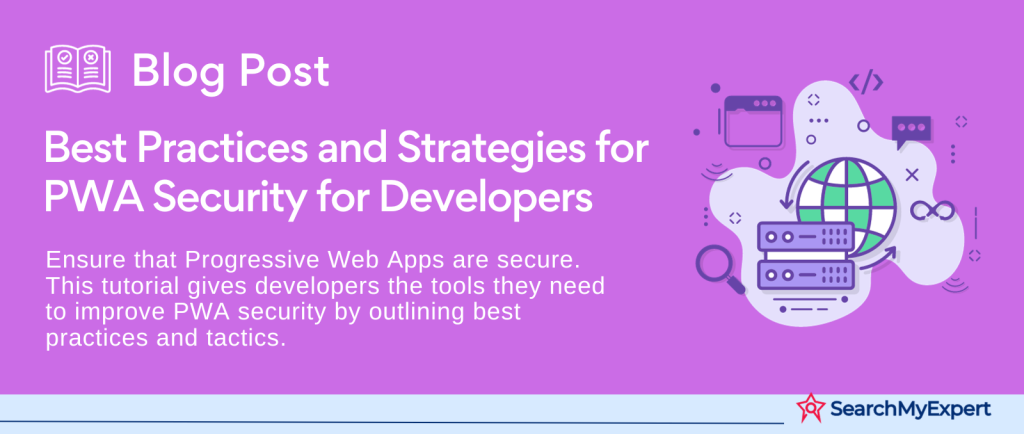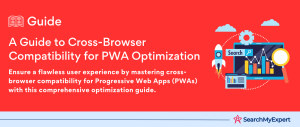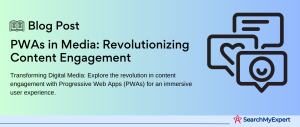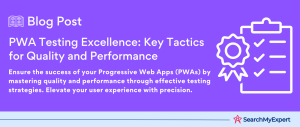Understanding Progressive Web Apps (PWAs): An Introduction to Security and Potential
Defining Progressive Web Apps
Progressive Web Apps (PWAs) are a revolutionary blend of web and mobile app experiences, offering users a fast, engaging, and seamless interface. Unlike traditional web applications, PWAs are characterized by their ability to function offline, receive push notifications, and load quickly even in uncertain network conditions. These capabilities are primarily enabled through service workers, web app manifests, and other modern web APIs. By leveraging these technologies, PWAs offer an app-like experience within a browser, complete with home screen icons, full-screen modes, and even offline functionalities.
The Rise of PWAs
The adoption of PWAs has been growing rapidly. Businesses and developers are increasingly turning towards PWAs for their ease of development and the broader reach they provide compared to traditional mobile apps. PWAs are not constrained by device ecosystems, meaning they can operate across various platforms without the need for different versions of iOS, Android, or other operating systems. This universality, combined with their performance and engagement benefits, makes PWAs a compelling choice for businesses aiming to enhance user experience and reach a wider audience.
PWAs and Sensitive Data Handling
With the growing adoption of PWAs, there is an increased potential for handling sensitive data. As these applications become more prevalent in sectors like e-commerce, banking, and healthcare, the need to manage personal information, financial details, and confidential data securely becomes paramount. This shift elevates the importance of robust security measures in the development and deployment of PWAs.
The Imperative of Security in PWA Development
Security is a critical aspect of PWA development and deployment. Given their web-based nature and the sensitive data they might handle, PWAs must be designed with stringent security protocols to prevent data breaches and ensure user trust. Developers and businesses must prioritize security considerations from the outset of PWA development, incorporating best practices and standards to safeguard against vulnerabilities.
Progressive Web App Architecture: Navigating Vulnerabilities and Security Layers
The Layered Architecture of PWAs
Progressive Web Apps (PWAs) are built using a layered architecture that enhances their functionality and user experience, but it also introduces potential security risks that need careful consideration.
Service Worker Functionalities and Risks
At the core of a PWA’s architecture is the service worker. A service worker acts as a network proxy, allowing PWAs to intercept network requests and cache assets. This functionality enables offline usage and faster load times. However, the powerful nature of service workers also presents potential risks. If a service worker is compromised, it can lead to significant security breaches, such as cache poisoning where malicious content is served to users.
Secure Contexts and Attack Vectors
PWAs operate in secure contexts, meaning they are served over HTTPS to ensure data integrity and privacy. Despite this, they are still subject to common web attack vectors. For instance, man-in-the-middle (MITM) attacks can occur if the HTTPS implementation is flawed or if digital certificates are mismanaged.
HTTPS Usage and Certificate Management
The use of HTTPS is mandatory for PWAs. It encrypts data in transit, safeguarding it against interception. Nonetheless, developers must be vigilant in their certificate management practices. Expired or improperly configured certificates can lead to vulnerabilities, allowing attackers to exploit these loopholes to intercept or manipulate data.
Cross-Site Scripting (XSS) and Injection Attacks
Cross-site scripting (XSS) is a prevalent issue in web applications, including PWAs. XSS attacks occur when an attacker injects malicious scripts into web pages viewed by other users, potentially leading to data theft or manipulation. Injection attacks, like SQL injection, are similar threats where attackers insert malicious code into applications, exploiting vulnerabilities to gain unauthorized access
to data.
Content Security Policy (CSP) Misconfigurations
Content Security Policy (CSP) is a critical tool for preventing XSS and other injection attacks. However, misconfigurations in CSP can create security loopholes. Incorrect CSP settings may allow attackers to bypass restrictions, enabling them to execute harmful scripts. Ensuring a properly configured CSP is essential for safeguarding against such vulnerabilities.
Unsecured Service Worker Communication and Resource Access
Service workers, while central to PWA functionality, can be a vector for security threats if not properly secured. Unsecured communication between service workers and other parts of the application can lead to data interception and manipulation. Additionally, improper handling of resource access by service workers can expose PWAs to risks such as cache poisoning or unauthorized data access.
Implementing Robust Security in Progressive Web App Development
Best Practices for Secure PWA Development
To ensure the security and integrity of Progressive Web Apps (PWAs), developers must adhere to a set of best practices and utilize various tools and strategies. This proactive approach to security helps in safeguarding against common vulnerabilities and potential threats.
Secure Coding Practices and Vulnerability Scanning Tools
Secure Coding Practices
Secure coding is fundamental in the development of PWAs. Developers should follow established coding standards and practices that prioritize security. This includes:
- Writing clean, understandable, and maintainable code.
- Validating and sanitizing all user inputs to prevent injection attacks.
- Implementing error handling that does not expose sensitive information.
- Keeping the codebase updated with the latest security patches.
Vulnerability Scanning Tools
Regular use of vulnerability scanning tools is essential in identifying and addressing security flaws. Tools like OWASP ZAP, SonarQube, and Fortify offer automated scanning to detect common security issues like XSS, SQL injection, and misconfigurations in real-time.
Data Encryption and Secure Storage Strategies
Data Encryption
Encrypting data, both in transit and at rest, is crucial for PWA security. For data in transit, TLS (Transport Layer Security) should be used. For data at rest, encryption methods like AES (Advanced Encryption Standard) can be applied to sensitive data stored in databases or caches.
Secure Storage Strategies
Developers should employ secure storage strategies to protect sensitive data:
- Use browser storage mechanisms like IndexedDB for large amounts of structured data but ensure the data is encrypted.
- Avoid storing sensitive data in local storage or session storage.
- Implement secure cloud storage solutions with strong access control measures.
Implementing a Strong Authorization and Authentication System
A robust authorization and authentication system is key to securing PWAs. This includes:
- Implementing OAuth2 and OpenID Connect for secure and reliable user authentication.
- Ensuring proper session management, including secure session cookies with HttpOnly and Secure flags.
- Utilizing multi-factor authentication (MFA) to add an additional layer of security.
Regular Security Audits and Penetration Testing
Security Audits
Conducting regular security audits is essential to identify and rectify potential security gaps in PWAs. This involves reviewing the code, infrastructure, and compliance with security standards and best practices.
Penetration Testing
Penetration testing simulates cyber attacks on the PWA to identify vulnerabilities that could be exploited. It is advisable to engage with external security experts or ethical hackers to perform these tests, providing a comprehensive assessment of the app’s security posture.
Secure Service Worker Implementation in Progressive Web Apps
The Critical Role of Service Workers in PWA Security
Service workers play a pivotal role in the functionality and security of Progressive Web Apps (PWAs). They act as a proxy between the web application and the network, enabling features like offline support, background sync, and push notifications. However, due to their powerful nature, ensuring their secure implementation is crucial for the overall security of PWAs.
Best Practices for Secure Service Worker Usage
Limiting Scope and Access to Resources
Controlling Scope
- Define the scope of service workers precisely to limit their control over the application’s assets and interactions.
- Restrict service worker scope to the minimum necessary, reducing the potential impact in case of a security breach.
Restricting Resource Access
- Ensure service workers only have access to the resources they need to function. Extra caution should be taken to prevent them from accessing sensitive data unless absolutely necessary.
- Regularly review and update the access permissions of service workers as part of ongoing security maintenance.
Secure Caching Mechanisms and Data Handling
Secure Caching
- Implement secure caching policies to protect the data stored by service workers. This includes encrypting sensitive data within caches and validating cached data to prevent cache poisoning attacks.
- Use versioning for cache assets to manage updates securely and prevent serving outdated or potentially malicious files.
Safe Data Handling
- Sanitize and validate any data before it’s cached to prevent injection attacks.
- Monitor and control the data flow between service workers, web pages, and network requests to ensure data integrity and confidentiality.
Implementing HTTPS Communication with the Server
- Enforce HTTPS for all communication between service workers and servers to ensure data confidentiality and integrity.
- Use HTTPS to prevent attackers from intercepting or tampering with requests made by service workers.
- Regularly update and properly configure TLS certificates to maintain secure connections.
User Privacy and Data Protection in Progressive Web Apps
Addressing Privacy Concerns in PWA Data Storage and Usage
In the era of digital transformation, user privacy has become a paramount concern, especially for Progressive Web Apps (PWAs) that handle user data. It’s crucial for PWAs to adopt strategies that respect user privacy while ensuring data security.
Privacy-First Data Storage
- Store only the minimum amount of data necessary for app functionality.
- Implement strong encryption for stored data, both on the client side and server side.
- Provide users with options to control their data, including viewing, editing, and deleting stored information.
Responsible Data Usage
- Use collected data responsibly and transparently, strictly for the purposes communicated to the user.
- Avoid sharing or selling user data without explicit consent.
- Regularly audit data usage to ensure compliance with stated privacy policies and practices.
Compliance with Data Privacy Regulations
GDPR Compliance
For users in the European Union, comply with the General Data Protection Regulation (GDPR). This includes:
- Obtaining clear, affirmative consent for data collection and processing.
- Providing users with access to their data and the right to be forgotten.
- Ensuring data portability and implementing data protection ‘by design and by default’.
CCPA Considerations
For users in California, adhere to the California Consumer Privacy Act (CCPA). Key aspects include:
- Transparency in data collection and sharing practices.
- Providing users with the right to opt out of data selling.
- Implementing measures to respond to consumer requests regarding their data.
Best Practices for Data Collection and User Consent Management
Transparent Data Collection
- Clearly communicate what data is being collected, why it’s being collected, and how it will be used.
- Ensure privacy policies are easily accessible and understandable.
Effective User Consent Management
- Implement clear and straightforward consent mechanisms.
- Allow users to easily modify or withdraw their consent at any time.
- Regularly update users about changes in data usage policies and practices.
Offline Security Considerations for Progressive Web Apps
Unique Security Challenges of PWA Offline Functionality
Progressive Web Apps (PWAs) offer offline functionality, allowing users to access content without an internet connection. While this feature enhances user experience, it introduces unique security challenges that must be carefully managed.
Data Integrity and Security in Offline Mode
- In offline mode, PWAs rely on cached data, which must be securely stored and protected from tampering or unauthorized access.
- Ensuring data integrity becomes a challenge as the app needs to function correctly with potentially outdated or incomplete data.
Risk of Data Breaches
- Data stored for offline use can become a target for attackers. Breaches can occur if a device is lost, stolen, or compromised.
- Sensitive data stored on the client side must be encrypted and securely managed to mitigate these risks.
Strategies for Secure Data Access and Synchronization
Secure Data Access in Offline Mode
- Implement encryption for all sensitive data stored for offline access.
- Apply strict access controls to limit who can access or modify the cached data.
- Regularly update and validate the security protocols used for data storage and access.
Safe Data Synchronization
- When the device reconnects to the internet, synchronize data with the server securely.
- Use secure, encrypted channels for data synchronization to prevent interception or manipulation.
- Validate and sanitize all data during synchronization to ensure it hasn’t been tampered with while offline.
Preventing Unauthorized Access and Data Breaches
Robust Authentication Mechanisms
- Implement robust authentication mechanisms that function effectively even in offline scenarios. This might include biometric authentication or secure tokens that are validated without a real-time server check.
- Ensure that authentication tokens or credentials stored on the device for offline use are securely encrypted and have an expiration mechanism.
Regular Security Updates and Patch Management
- Regularly update the PWA, including its offline components, to address any newly discovered vulnerabilities.
- Implement a system for automatic updates to ensure that security patches are applied promptly when the device is online.
Intrusion Detection and Prevention Systems
- Utilize intrusion detection systems (IDS) and intrusion prevention systems (IPS) to monitor for unusual activity that might indicate a security breach.
- Implement robust logging and monitoring systems to detect unauthorized access attempts or data breaches, even in offline mode.
Continuous Monitoring and Maintenance for PWA Security
Emphasizing the Importance of Ongoing Security Monitoring
In the dynamic landscape of Progressive Web App (PWA) development, continuous security monitoring is not just a recommendation—it’s a necessity. The ever-evolving nature of cyber threats means that a PWA’s security posture can become obsolete if not regularly reviewed and updated.
Proactive Security Monitoring
- Implement real-time monitoring tools to track and analyze security logs, user activities, and system vulnerabilities.
- Use automated scanners and threat detection systems to identify potential security issues before they can be exploited.
Regular Security Assessments
- Conduct regular security assessments, including vulnerability scans and penetration testing, to identify and address new security threats.
- Ensure that these assessments cover all aspects of the PWA, including its server-side components, service workers, and client-side storage.
Implementing Security Incident Response Plans
Developing a Response Plan
- Establish a comprehensive incident response plan to manage security breaches or data leaks effectively.
- This plan should include clear protocols for incident detection, containment, eradication, and recovery.
Training and Preparedness
- Train development and operations teams on the incident response plan to ensure a swift and effective response to security incidents.
- Conduct regular drills and simulations to keep the team prepared and ensure that the response plan remains effective and relevant.
Vulnerability Patching Procedures
Timely Patch Management
- Implement a systematic process for applying security patches and updates to the PWA.
- Prioritize patches based on the severity of the vulnerabilities they address and apply critical updates without delay.
Automated Update Mechanisms
- Where possible, use automated systems to deploy patches and updates, reducing the time window of vulnerability exposure.
Staying Updated on Evolving Security Threats
Continuous Learning
- Stay informed about the latest security threats, trends, and best practices in PWA development.
- Participate in developer forums, attend security conferences, and subscribe to security advisories to keep abreast of new developments.
Updating Security Practices
- Regularly review and update the PWA’s security measures to align with evolving threats and best practices.
- Incorporate lessons learned from security incidents, both internal and external, to strengthen the PWA’s security posture over time.
Conclusion:
Securing Progressive Web Apps (PWAs) is a multifaceted endeavor that demands attention to detail, a proactive approach, and a commitment to continuous improvement. From implementing robust security in service worker usage, and ensuring user privacy and data protection, to addressing the unique challenges of offline functionality, each aspect plays a critical role in fortifying the security of PWAs. Furthermore, the importance of ongoing security monitoring, incident response planning, and staying updated on evolving threats cannot be overstated. By adhering to these best practices and embracing a mindset of vigilance and adaptability, developers can create PWAs that are not only functional and user-friendly but also secure and resilient against the ever-changing landscape of cyber threats. As technology continues to advance, staying informed and prepared is key to navigating the future of PWA development and security.
Elevate your web experience with Progressive Web App Service Companies.
Table of Contents
Toggle






